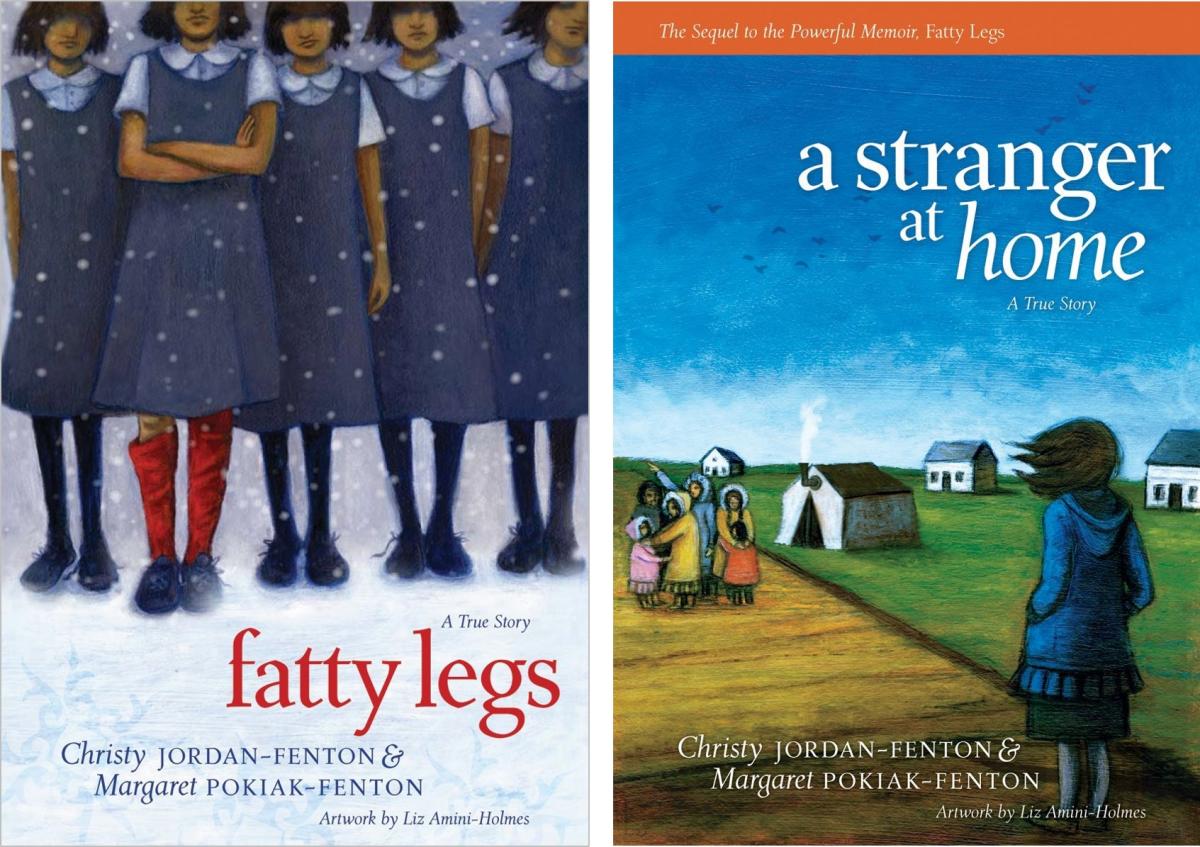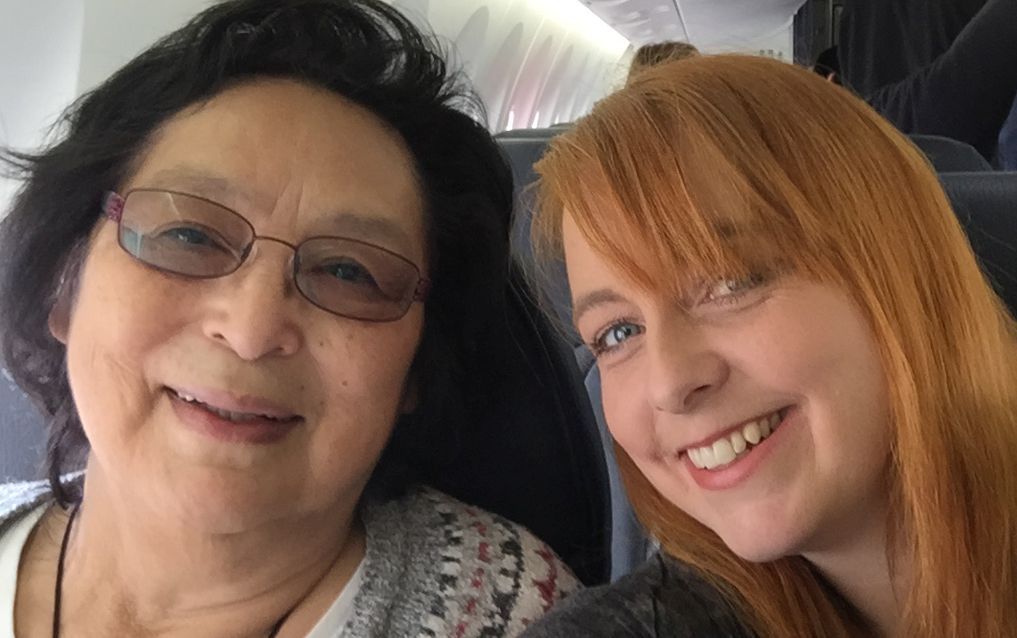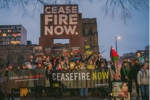Christy Jordan-Fenton is a grassroots activist, educator, and author who lives with her family on a farm outside of Fort St. John, a small community in northeast British Columbia. Being raised in part by a Cree stepfather who attended residential school, and later residing with her residential school survivor mother-in-law, as well as being dedicated to Indigenous ceremonial practices, fueled Christy’s activism in support of the rights of Indigenous peoples. It also inspired her to write four children’s books about her mother-in-law’s experience at residential school. Christy uses her books as tools to educate young people about the residential school system and its legacies. Christy is also part of the grassroots effort to respect Indigenous rights by halting construction of the Site C hydroelectric dam. Amnesty International caught up with Christy in Fort St. John.
Thank you for meeting with us Christy. Do you remember the first time that you heard about the residential schools?
Probably when I was in Grade 7. I had been partly raised by a residential school survivor, without even knowing it. Many people who lived in the low income communities I lived in were residential school survivors and exhibited unhealthy behaviours like alcoholism and depression, and none of us children really knew what that was all about. A teacher showed us a film called “Where the Spirit Lives,” and for many of us, that was the first time we had heard of residential schools. Some of us left wondering if maybe this was what happened to the adults in our lives. After that I tried to find any other resources or materials I could about it, but there weren’t any. It wasn’t until Margaret, my mother-in-law, started talking to me that I was able to get more information about them.
 As you have spoken with your mother-in-law Margaret and done your own research, how has your understanding changed from the shock of first seeing that film?
As you have spoken with your mother-in-law Margaret and done your own research, how has your understanding changed from the shock of first seeing that film?
Her story made it more personal because it was the first time I had been able to sit down with an elder and hear their personal experience. Her experience was in some ways very different because she did find ways to triumph in the school, whereas that was missing largely from the stories I knew of before speaking with her.
Through my research I started to discover the lasting effects of residential schools. Not just what happened at the school, but making connections between what happened at the school and how it impacted the behaviour of survivors.
For example, my stepfather used to boil water and put it in the sink. He would have me wash dishes in it pretty soon after that, and I remember the water being so hot that it used to burn my fingers. I thought it was a punishment and wondered why he hated me so much. Through talking with Margaret about all the bleach that they used and the cleaning that they had to do at residential school, it clicked in my head that he was trying to teach me what he thought was a good way and he just thought that was what you had to do because that’s what he had to do in his experience.
I think that making the connection between what happened at the school, and how children were then raised by adult residential school survivors, was the really big epiphany for me.
Most Canadians know a little bit about residential schools now, but many may not understand the lasting impacts on those who were taken away and those who were left behind.
When our elders say seven generations of healing it is very, very accurate. There are things that I do to my children that I have inherited from that legacy myself, and I think that’s pretty true for anyone who has been raised by a residential school survivor. When I speak to students I tell them the children at the schools were not raised by parents. That meant there were no bedtime stories, no hugs, no kisses, and if you scraped your knee nobody cleaned it up for you. There was none of that support system. We learn by what we experience. How can you grow up to give support and nurturing in those ways, if you never experienced it yourself?
The Truth and Reconciliation Commission concluded that the residential school system was part of an intentional system of genocide against First Nations, Metis and Inuit peoples. What does that finding mean to you?
The residential school system was never about what they wanted the children to learn. It’s what they didn’t want them to learn. Indigenous peoples had amazing skills. Indigenous peoples’ technology was in their heads not in their hands, like how we classify technology today. The settlers came and they wanted the land, so they had to remove that technology. They had to make sure the children weren’t learning the things they needed to live off the land. They also needed to make sure the children couldn’t connect with their culture so they stripped the children of their language, their rites of passage, their cultural practices, ceremony, rituals. All those things were taken away to disconnect them. They stole the inherent right of the children to their culture and technology and replaced it by giving them low levels of skills to go work in factories or on ranches.
When Margaret went to school the little girls had to work in the hospital. They weren’t putting them to work in the hospital with the intention they would become nurses or doctors. They were taught to clean bedpans and change sheets.
It was not about the gift of education. They took away a solid education that the children would have shown up at the school with, shamed them, made them not want anything to do with it, isolated them, and replaced that with menial skills. Basically they ensured the children would struggle to make it in the old ways of self-sustainability, and enslaved them into an economic system where they were used as a form of cheap labor.
You mentioned Margaret’s resilience and resistance to what was done to her. While not forgetting the evils of the residential school system, it is also important to honour that resilience.

Children sometimes left when they were 3 or 4 years old and didn’t come back until they were 14 or 15. They had to actually work to re-learn their culture. I always tell students that any elder they know who still retains their Indigenous language is a hero. Not only did they lose that and have to re-learn it, but for most of them it was a shameful process of having to re-learn it because there wasn’t always understanding in the communities when they came home. The communities mistook the lack of cultural knowledge to mean those children wanted to be white instead. And that wasn’t the case, they just weren’t taught those things. And they were returning with an entirely foreign thought system drilled into their heads, so it created gaps in understanding between the youth and the elders. Survivors had to work very hard to fit back into their communities, and then to become fire keepers and fire carriers. To carry that forward took a great amount of humility and courage, so there are some very resilient elders who have gone through that experience.
What are some of the links you have made between the legacy of residential schools and violence against Indigenous women and girls?
One of the worst things that happened was the normalization of violence. When you live in a situation where you are a child who is isolated from your supports, you receive no outside influence, you aren’t connected to anything else, and are told daily that women are dirty and sinful and that they are resources, you have children being brainwashed by that. And then the violence going on toward the children, the female and male children.
Two things happened from that.
First, Indigenous women left the schools and became involved in relationships where they felt most comfortable—in situations that maintained violence because they didn’t know how else to live. That became their normal at an early age. You do what you know, and if you know how to survive in a situation where you are facing violence every day then that is what you will seek out.
Second, Indigenous boys were taught how awful and sinful women were. They had probably been abused, possibly sexually themselves. It made it difficult for those boys to become men who could support women, and for girls to become women who could uphold men, in traditional ways. The normal became violent patriarchal relationships. In some cases, when the survivors went back to their communities, they became perpetrators themselves. There was a significant problem where the abused became the abusers. And of those men who were not abusive, many still lost their ways to defend and honour women, and women learned to accept abuse as just another burden of life. Whether it was white people or Indigenous people being the perpetrators, it all got normalized. That was standard daily business at the schools, and it became standard daily business in many communities. And you didn’t say anything about it.
Survivors did not talk about their experiences at residential school very much until quite recently, since the Truth and Reconciliation Commission began. They were heavily programmed not to. So all this time it’s been a secret, and been normalized no matter who was committing the violence. No one knew how to stand up, or even what the point to standing up was.
How do you go to the police if you do want to stand up to the violence? You may have been a mother or father who witnessed the police take away your children, or you yourself may have been taken away, or if you ran away from school the police found you and took you back. There’s no relationship with the police and there is a fear of authority figures. Even if you want to stand up who do you go to?
The Truth and Reconciliation Commission report notes the role of non-Indigenous society in helping to ensure true reconciliation. How can this be done?
By stopping the new forms of residential school. The state of the foster care system is absolutely appalling, and there are thousands of social workers across Canada who equate poverty with neglect. They are not the same. There are ways to address poverty that are much easier to deal with than neglect and don’t mean putting a child in a white home. And to train social workers to stop equating traditional values and practices with being backwards, instead of respecting rights of self-determination within the family unit.
Our communities here do not have high schools. If you come from a small community where everyone is largely related and everybody knows each other, your daily activities are very different than the way life is lived in town. They are community based, and on many reserves they are connected with culture practiced on the land.
For example, at Halfway River First Nation, where children are billeted in Fort St. John for their high school years, they have horse culture and horses are everything to those children. They don’t have the horses in town. They don’t have practicing horse culture on the land as a community activity to participate in anymore. When I speak to students, I say, ‘Would you leave behind hockey and your friends and family to go and live in a billet house in the city where you don’t have anything to do, just for the chance to go to school?’
We need to change our curriculums, even before talking about residential schools, to talk about the gifts of Indigenous culture and Indigenous knowledge. We have to change our whole view on what technology is. It wasn’t a more advanced society that conquered a less advanced one. That’s why when the settlers first came here they were so reliant on Indigenous peoples. Respect is due to our Indigenous peoples for more than just how pretty beads and feathers look. Our Dane-zaa have been here more than ten thousand years, living sustainably. They didn’t go extinct, they didn’t destroy the environment, and they were successful enough to have leisure time to create art, music, mathematics, astronomy, and much more. My children don’t learn this in school as part of their standard curriculum.
We need to begin to look at what we can do and how we can help and get in there and support our communities as good allies. And being a good ally means to stop taking paternalistic approaches. We aren’t talking about childlike people here who need more colonized ideas about how to save them. We are talking about ancient civilizations that are still going with incredible strength and resilience. It’s past our turn to listen. We also need to look at what our responsibility to uphold the treaties are, because we are all treaty people. And at the very least we need to acknowledge the brutal truth of what has happened under colonization.
On November 3, Amnesty International is releasing “Out of Sight, Out of Mind: Gender, Indigenous rights, and energy development in northeast British Columbia, Canada.” Amnesty International interviewed author Christy Jordan-Fenton as part of the research for this report.
Jackie Hansen is the Women’s Rights Campaigner with Amnesty International Canada. Follow her on Twitter @AI_WomensRights












